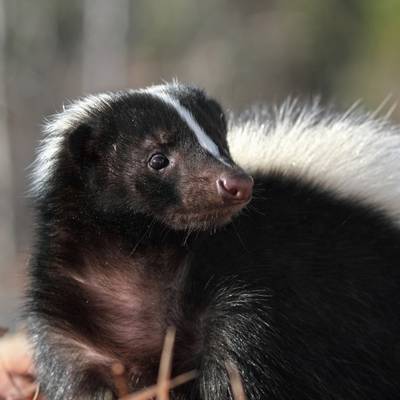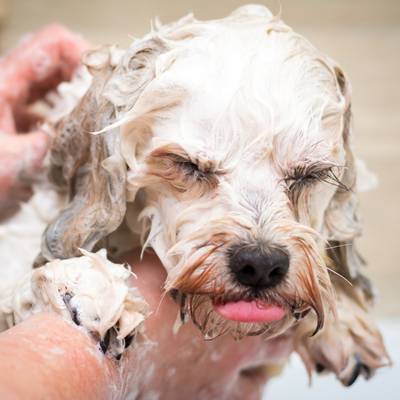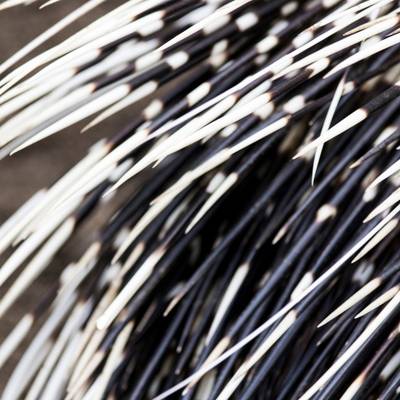
Preventative Care For Pets
Hi everyone, and thanks for joining me on this episode of Val Talk’s Pets. Last episode I talked about the vet crisis shortage in Canada. Getting into the vet right […]
 play_arrow
play_arrowHow to Choose the Perfect Name for Your Pet Val Cairney

 play_arrow
play_arrowSpringtime Prep Val Cairney

Hi everyone, and thank you for joining me on this episode of Val Talk’s Pets. Well spring is around the corner. I know it sure doesn’t look like it here in Southern Ontario, Canada, but it will be soon and for many areas spring has already sprung. Lucky ducks!!
With spring comes some great things we can finally do with our pets, like get outside more and go for walks without the challenges of snow banks, salty streets and icy surfaces. Along with this wonderful time of warmer weather and trees and plants coming into bloom, we also have to deal with melting snow, mud and the wildlife coming out to get some well needed food and stretch their legs. Spring does have some challenges so let’s go on a spring walk through what to be prepared for and how to handle some of those challenges.

As the snow begins to melt, so comes a rather interesting thing called snow mould. When I interviewed Joanne Carr from Omega Alpha Pharmaceuticals about allergies, Joanne mentioned snow mould and what it can cause. So, what is snow mould? Snow mould basically according to Wikipedia is “a type of fungus and turf disease.” The mould or fungus grows under the snow on grass or dead organic matter, so all those leaves we never got raked, in the fall before the first snow fall. According to cbc.ca, “this occurs when there is heavy snow cover on the ground that is not completely frozen for an extended period. The fungus thrives when the soil surface temperature approaches zero Celsius and the snow starts to melt.”
Snow mould is often seen as a lawn disease. So guess who goes out on to the lawn or grass on a regular basis? Well in most cases our dogs do. When a dog’s paws encounter the snow mould obviously this means their paws have now picked up the fungus. Plus, a dog’s face is closer to the ground and most like to go around smelling things. This means that the dog is inhaling the snow mould or fungus. What this creates is an allergy situation that can be from encountering the snow mould topically or by inhaling the snow mould which then of course is going to manifest into symptoms. According to legendarycanine, while the snow mould is not serious “it can cause irritation and discomfort.” “One of the most common symptoms of snow mold is a rash or red, irritated skin or hotspots. Dogs may also experience itchiness, flaky skin, yeast infections, and even hair loss in affected areas.”

It is very difficult to prevent being exposed to snow mould. You would have had to have been very diligent cleaning up all debris before the snow fell or you would need to have cleared paths for your dog or avoid areas with high snow. If you can, great, but that does sound pretty difficult to me. One thing you could do, and I do this, is to have your dog wear boots. Even the balloon boots would help keep mold from the paws. I find I put Tundra’s boots on more in the spring than I do in full blown winter.
Now I know some people have absolutely no luck getting boots on their dog, so I would suggest washing their paws immediately after coming inside. A warm wet cloth or grooming wipes will really help. If your dog is having a reaction to snow mold with skin irritations I would suggest again, trying to wipe the dog’s fur and dry it, but also to have some first aid gel or ointment on hand, plus hotspot spray or ointment. I would also follow up with EZ Mobility from Omega Alpha because it’s the anti-inflammatory property that this product has that I’m after. The dog’s system is inflamed from the allergic reaction and this needs to be calmed. So, I would look at this.
You could go the Benadryl route if the dog is really suffering, but remember to look up the dosage for dogs and make sure the Benadryl has no artificial sweetener in it. The other thing you could do is bathe your dog in a soothing antifungal shampoo. This could get the fungus off so that the immediate reaction will dissipate, but again, the dog has to go out again, so wipe down the body and wash those paws. Snow mold according to the cbc.ca “may last from a week to over a month. Windy and rainy days kill off the mould; the wind dries it and the rain washes it away. But, snow mould can persist until the warm weather arrives.” In this case we have no option but to stay diligent until the days are warm and have on hand what we need in case our dogs react. And dogs that already have allergy issues will be quite susceptible so be prepared.

As the snow melts, we encounter not just snow mould, but mud and water too. I always wonder what is in these pools of water and the squishy muck. There has to be a cocktail of salt and chemicals and what have you in the spring runoff and thawing ground. So again, I like to put those boots on. And if you can’t, wash those paws. Don’t forget your dog will immediately start licking their paws when they come inside and think of what they could possibly be ingesting. The other thing too depending on where you walk, as the snow melts there are objects under that snow that will reveal themselves as the snow melts. So, eyes to the ground as well to make sure your dog doesn’t step on something harmful.

As spring becomes warmer and the snow is starting to look like a distant past, guess what comes out to have a good look around? Our little black and white friends come out and so do our spikey friends. Skunks and porcupine encounters are quite common in the spring. Tundra’s one and only (knock wood) encounter with a porcupine was in mid-May. I really can’t say which is worse, just both are absolutely terrible. Let’s start with skunks. What do you do if your dog has a skunk encounter? Skunk encounters vary by severity, but even a minor encounter is dreadful. Sometimes a dog and even a cat will come face to face with a skunk. In this case the skunk will stop,and then try to scare off the dog by stomping, huffing and puffing up. The spraying is the last resort. If they feel they are completely threatened then they will turn, arch their back and let fly. The distance the pet is from the spray will determine how bad they get it. And if the dog goes after the skunk after it has sprayed, unfortunately it still has a few more bursts in it and can let the dog have it again. This is how many dogs will have spray in their face, on their chest, down their legs or their back. Getting sprayed in the face is the worst. Although not fatal, getting sprayed in the eyes can cause serious irritation like getting tear gas in the face and if the dog gets it in the mouth and swallows there can be some serious fallout. If the dog has been directly sprayed in the eyes and mouth, you should go to the vet as soon as possible.

In the meantime, you will be up against a very odorous pet. Some people go right for a bath with shampoo, but if it isn’t a skunk shampoo, it won’t work. Some go for the tomato juice but this is extremely messy and doesn’t really work very well. There are some other home remedies for washing a skunked pet, some work some not so much. But, the question is, do you have all the ingredients on hand? You will need hydrogen peroxide, a fresh bottle, sodium bicarbonate and liquid dish soap. I’ve had some people say this has really worked and some say not so much. I think the fresh peroxide is the key. Or you can have on hand a skunk remover spray that you can get at your pet specialty store. These sprays are designed to neutralize the oil that the skunk has sprayed. It’s probably a good idea to be proactive and have a bottle on hand if you know you have skunks in your area. Bottom line is that this will be a miserable 24 to 48 hours for you and your pet. And remember, when spraying or washing anything into a pet’s fur that has been skunked, wear gloves. If not, you will smell like a skunk yourself and I hate to say this, but taste it in your mouth. Bleh!!

Our next little wildlife friend that can also cause real havoc is the porcupine. When you see your dog with a face full of quills it is frightening. When Tundra got quilled, he was drooling so much and there was some blood from the quills, so the blood and saliva mixed together and was running out of his mouth like a tap. It was horrible. Quilling from a porcupine can be just a few quills and then it can be a full on, full face and mouth quilling. If this is the case, you have no option but to get to the vet. The dog will have to be sedated and the quills removed safely. If there are a few quills and your dog will let you remove them, then go ahead.

Now I hear a lot of people say you should cut the quills before pulling them out, but according to quite a lot of research, you shouldn’t do this. According to vcacanada.com, “Cutting the shaft makes the quill splinter more easily which ultimately makes it harder to remove. It may also allow for segments of the quills to become lodged in the tissues.” The recommended method if you are removing a few yourself is as according to veasie veterinary clinic, is to “use some needle nose pliers and grab the quill as close the animal’s skin as possible and then remove quickly and straight out of the body.” Vcacanada.com says the same thing, “it is simply a misconception that cutting embedded porcupine quills will “deflate” them, making it easier to remove them.”
When I saw hubby holding a bloody faced Tundra I ran for the needle nosed pliers and between the two of us we got out the quills that he had. Now, we washed his face after, dabbed colloidal silver all over his snout and then we took a flashlight and looked all through his mouth. We didn’t see anything, but we checked later in the day and sure enough we found a quill running up the side of one canine tooth making its way up into the gum. So, you have to be very diligent and keep checking for 24 hours after removing what you think are all the quills. However, if you are looking at a face full of quills, get to the vet.

Spring is a great time but the very beginning of spring as winter is just letting go isn’t actually all that pleasant. Yucky dirty snow is exposed as it melts, mud appears, puddles and probably a host of newspapers under the snow that you never found. All of these make for a dirty dog. Early spring is that time of year when you have to have a towel or two by the door at all times. I found this great microfiber towel that has pockets for your hands. You put your hands in the pockets and the paw between and give a good rub and dry. I love it! And the last part of early spring also means that for many dogs it’s time for the big shed. Ahhh yes. Shedding time. I could vacuum twice a day every day during the early spring shed. I have found that a trip to the groomer does help because that undercoat is just coming out like crazy and the groomers have those great blow dryers that just blow that undercoat right out. But, if we can’t get to the groomer, it’s a daily brushing and a workout for the vacuum. All pet parents know this routine.

Now, one thing I do need to mention and that is with regards to cats. Spring means migratory birds. As the migratory birds start appearing it is important to make sure cats are not out catching some rare birds or pestering those trying to rest after a long flight. One of the biggest objections to allowing cats to go outside is how many birds they kill and how many of these are special migratory birds. So, let’s be careful with regards to this.
So, as we look forward to warmer days we first have to make it through winter letting go. From snow mold to mud to shedding, pet parents have some challenges to face. And our furry spiky friends are about to join our days so we have to watch out for them as well. A very happy spring everyone. Get ready those towels, grooming wipes, skunk sprays, first aid ointments and the vacuum. It’s almost spring, so as I say, in this case, preparation is caring!

Tagged as: snow mold, skunk spray, pet quilled, pets in spring.
Hi everyone, and welcome to Val Talk’s Pets, the forum for pet parents and enthusiasts alike. So, I have been working in the pet industry now for almost 10 years and, on a daily basis, I handle a lot of issues and questions arising from pet parents. I am not a veterinarian but I do have certifications in Canine, Feline, Small Animal, Fish and Herptile and Avian Health and Nutrition from the University of California, Davis Extension, the Vet College.

Val Cairney March 3, 2023
Hi everyone, and thanks for joining me on this episode of Val Talk’s Pets. Last episode I talked about the vet crisis shortage in Canada. Getting into the vet right […]

Val Cairney August 1, 2025

Val Cairney July 18, 2025
For the price of a coffee, or more if you are feeling generous, you can help keep this podcast going & growing. Please visit my ko-fi page to make a donation. Thanks!
all rights reserved - Val Talks Pets - 2024